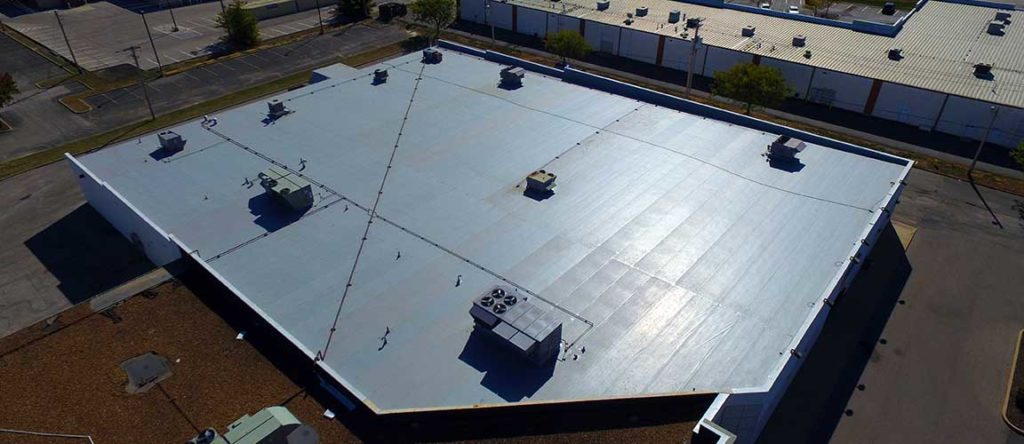Benefits of Roof Coatings
Roof coatings are applied to low slope roofs on residential, commercial, and industrial buildings to extend the life of a roof by preventing water, chemical, or physical damage which saves money for the building owner. Certain roof coatings even provide an extra level of waterproofing protection to help shed water to keep building interiors dry. Also, roof coatings are the most effective and least costly option to help buildings save energy.
How Roof Coatings Lower Roof Temperatures
Reflective roof coatings reflect visible light and infrared and ultraviolet radiation. This leads to lower roof temperatures which in turn helps reduce cooling costs for buildings with air conditioning units and reduce interior temperatures in buildings with no cooling units. By minimizing cooling costs in warmer climates, peak energy usage is reduced thereby decreasing the risk of power outages and the strain on the electrical grid.
How Roof Coatings Reduce Urban Heat Island Effect
The Urban Heat Island Effect is a regional elevation in air temperature, usually gauged by the difference between urban and rural air temperatures. On a typical summer afternoon, a clean white roof that reflects 80% of sunlight will stay about 55°F cooler than a gray roof that reflects only 20% of sunlight. Likewise, a cool-colored roof that reflects 35% of sunlight will stay about 22°F cooler than a traditional roof that looks the same but reflects only 10% of sunlight. Reflective roof coatings reduce the Urban Heat Island Effect and peak energy use which lowers carbon footprints and smog while lessening the amount of roofing waste going to landfills.
How Roof Coatings Prevent Tear-Off and Waste
Every building owner will eventually be faced with the decision to completely tear-off an existing roof or to repair it. In fact, 2.5 billion square feet of roofs are either replaced or re‐coated each year. Given that roofing materials are the third greatest contributor to waste in landfills, roof coatings are an ideal solution to extend the life of a roof and prevent tear-off and waste.


